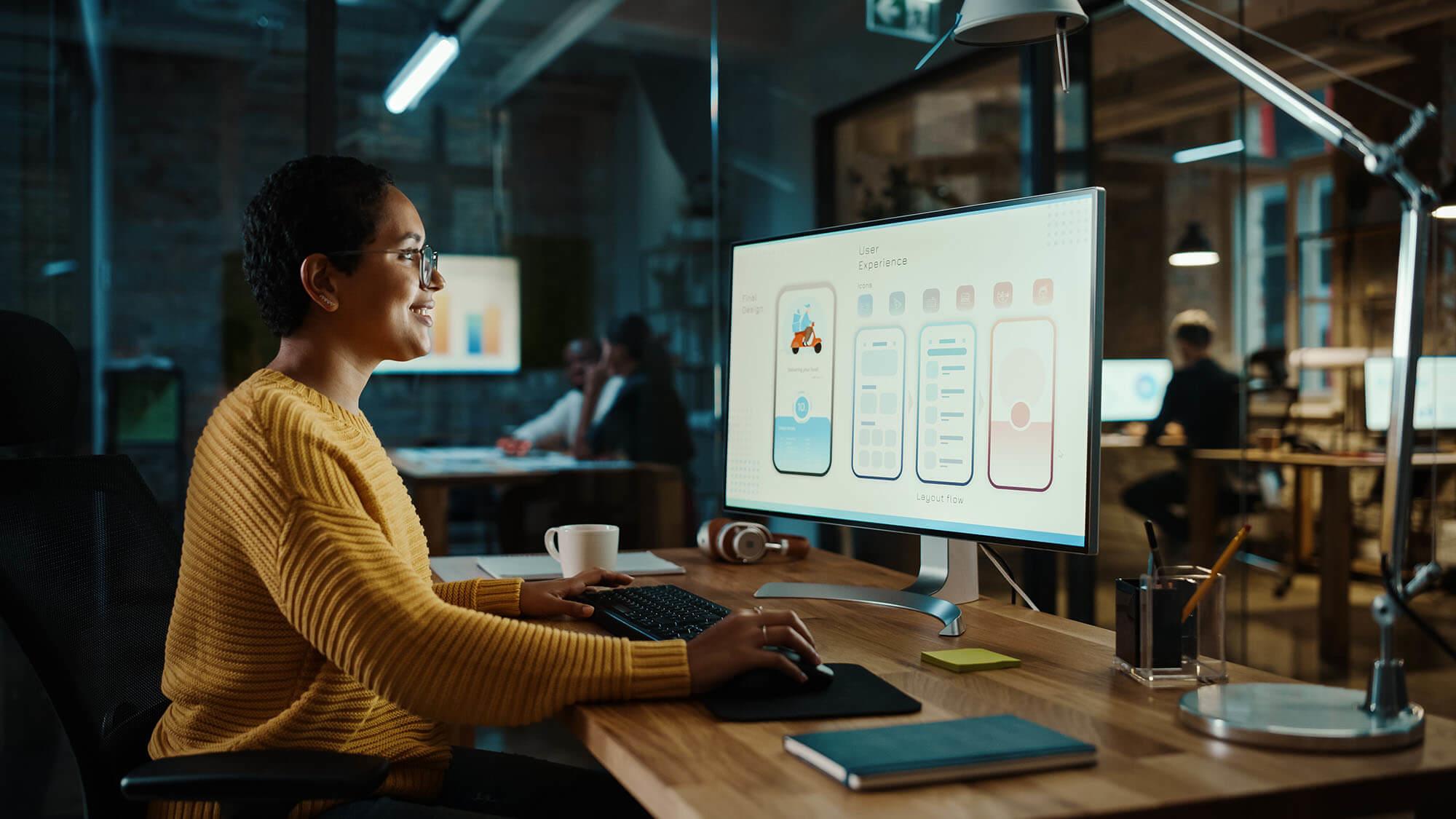Exactly How to Enhance Web Site Efficiency with Better Web Design
How to Accomplish a Well Balanced and Visual Website Design That Fulfills the Diverse Demands of Users and Services Alike
Accomplishing a well balanced and visual internet layout that effectively satisfies the different demands of individuals and organizations needs a nuanced understanding of both style principles and customer behavior. By harmonizing components such as color, typography, and imagery with the important elements of functionality and accessibility, designers can produce compelling digital experiences. Nevertheless, the difficulty exists in making certain that these components interact cohesively while addressing the one-of-a-kind requirements of varied individual teams. Just how can one browse this elaborate landscape to strike the ideal balance? The answer may hinge on a deeper exploration of crucial layout strategies.
Recognizing User Needs
As website design significantly comes to be a crucial element of individual experience, understanding individual needs arises as a fundamental action in producing efficient digital atmospheres. web design. An extensive grasp of customer demands is vital for developing web sites that not just attract site visitors yet additionally involve and retain them. This understanding can be accomplished with numerous approaches, including customer research study, surveys, and use screening, which offer insights right into individual choices, behaviors, and pain points

In addition, recognizing customer needs extends to responsiveness and access, making certain that all users, no matter of gadget or capability, can browse the website flawlessly. By installing user-centric concepts into the style procedure, internet designers can develop balanced settings that satisfy the varied needs of both individuals and companies. Inevitably, focusing on user understanding causes much more meaningful communications and enhanced general complete satisfaction with the electronic experience.
Principles of Aesthetic Design
A user-centered strategy naturally brings about the factor to consider of visual design principles, which play an essential function in shaping the overall user experience. web design. Effective aesthetic design balances components such as shade, typography, images, and design to develop an aesthetically enticing user interface that resonates with users
Shade theory is fundamental, as it stimulates feelings and influences perception; hence, a thoughtful color palette can boost brand name identity while guaranteeing readability. Typography, on the various other hand, contributes to the design's clarity and power structure, assisting users via the content effortlessly. Selecting typefaces that align with the brand's individuality fosters recognition and engagement.
Images is one more important part, offering context and aesthetic rate of interest. Premium images should matter and sustain the overall story while avoiding mess.
Moreover, the layout has to guarantee a sensible circulation of details. Using principles such as positioning, closeness, and whitespace improves company and assists in navigation.
Including these aesthetic style concepts not only draws in users yet likewise cultivates count on and credibility, ultimately resulting in a more satisfying communication. By harmonizing visual components, developers can produce an interesting and memorable experience that satisfies the varied demands of individuals and businesses alike.
Significance of Functionality
Use stands as a cornerstone of effective internet design, straight affecting just how users engage with a site. It encompasses the ease with which individuals can navigate, understand, and involve with site content. A properly designed website assists in smooth interaction, guaranteeing that Recommended Site customers can successfully accomplish their tasks without unnecessary frustration. When usability is focused on, it boosts customer satisfaction, resulting in enhanced involvement and higher conversion rates.
Additionally, a focus on usability fosters trust and credibility. Websites that are user-friendly and easy to browse are viewed as expert and dependable, motivating individuals to return. Alternatively, bad usability can lead to high bounce prices, as users rapidly desert websites that annoy them.
Additionally, usability is essential for meeting diverse customer demands. An internet site should satisfy various demographics, ensuring that all users, no matter their technological proficiency, can access and utilize its functions. This inclusivity not just widens the individual base yet also boosts the general effectiveness of the website in achieving service goals. Eventually, by prioritizing usability, web developers create an even more appealing, reliable, and efficient on-line websites experience that benefits both customers and businesses alike.
Availability Standards in Style
Including ease of access standards in website design is essential for producing a comprehensive on-line setting. These criteria, primarily detailed by the Internet Material Access Standards (WCAG), make sure that all individuals, including those with specials needs, can effectively communicate with digital web content. By sticking to these guidelines, developers can boost functionality throughout different systems and tools.
Secret aspects of access include supplying alternate message for pictures, guaranteeing enough shade contrast, and using clear and constant navigating. Furthermore, implementing keyboard navigability allows customers who can not make use of a mouse to gain access to all capabilities. It is also vital to think about using display viewers, which call for well-structured HTML to convey details properly.
Moreover, sticking to access requirements not just advantages individuals with impairments however additionally improves the general user experience. Eventually, integrating ease of access into internet design is an important action towards accomplishing a balanced and visual electronic presence that offers the demands of all customers.
Harmonizing Visuals and Functionality
While striking a harmonious balance in between visuals and capability is vital in web style, accomplishing this balance frequently poses a challenge for developers. An aesthetically appealing internet site can captivate customers, drawing them right into the material; nevertheless, if it does not have performance, the user experience can rapidly weaken. Alternatively, extremely practical sites might focus on use yet risk showing up nasty or bland.

Additionally, interactive elements need to enhance the total design, giving appealing experiences without overwhelming individuals. Elements like buttons and forms need to be clearly noticeable and easy to communicate with, reinforcing capability.
Inevitably, effective web layout synthesizes visuals and performance, developing an appealing setting that meets the varied demands of users and organizations alike (web design). By carefully considering exactly how each style selection impacts both appearances and use, designers can craft internet sites that resonate with individuals while meeting their intended objectives
Verdict
By understanding individual needs and adhering to aesthetic style concepts, designers can create visually enticing interfaces that maintain performance. The emphasis on use and adherence to access criteria makes sure that varied user groups can interact flawlessly with digital systems.